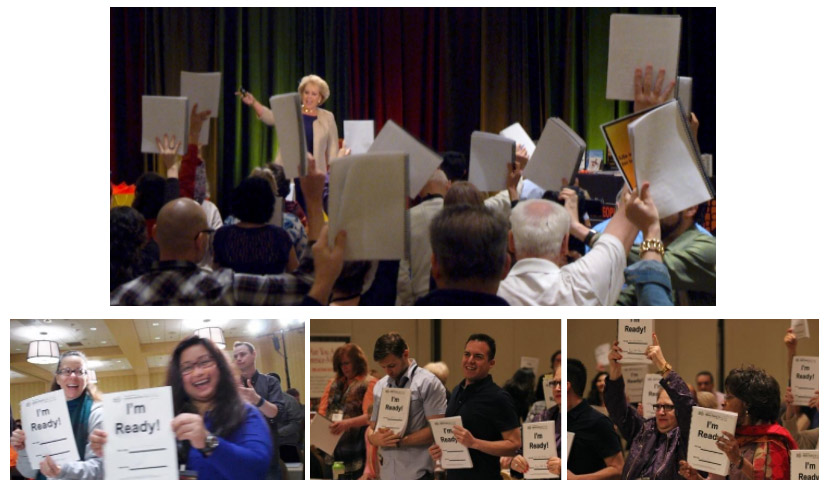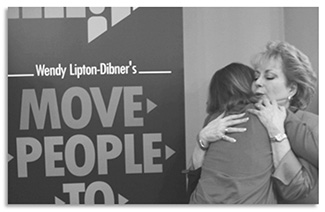We’ve long seen documented evidence of the overwhelming rate of entrepreneurial failure, now worsened by the pandemic. Prior to COVID-19, the U.S. Bureau of Labor Statistics reported about 20% of U.S. small businesses failed within their first year. By the end of their fifth year, roughly 50% had closed their doors.
When it comes to women- and minority-owned businesses, statistics tell an even darker story. In January, 2021, the U.S. Census Bureau released their Annual Business Survey covering reference year 2018. Their data showed only 18.3% of all U.S. businesses were minority-owned, 19.9% were women-owned, 5.8% were Hispanic-owned, and 5.9% were veteran-owned.
Adding to these dismal statistics, the SBA Office of Advocacy released a report in March, 2021 that revealed women, African-Americans, Hispanics, and veterans tend to own significantly smaller ventures than do whites and non-Hispanics. It’s no coincidence that these same communities were hardest hit by the pandemic.
We also know women, minorities, and underserved Americans get significantly less funding than white, non-Hispanic entrepreneurs and that providing funding for start-up businesses isn’t enough to guarantee success. Research has shown,
even when they’re fully funded.1
Nevertheless, regardless of the odds, millions of Americans seek the entrepreneurial dream every year, paying billions of hard-earned dollars and/or devoting millions of hours engaging in virtual and live trainings, coaching programs, e-courses, book clubs, incubators, accelerators, networking conferences, networking groups, mentorship programs, and more.
In a research study of more than 5,000 aspiring entrepreneurs who attended live seminars, virtual trainings, and coaching programs, Wendy Lipton-Dibner2 found 89.7% of attendees reported having spent a total of (at least) $1,000 (in some cases hundreds of thousands of dollars) for business development assistance, only to come up short. Among those who reported they had successfully launched a business, none had achieved or sustained greater than 5-figure annual revenues.
In addition, Lipton-Dibner found 97% of women, minorities, and underserved Americans reported they were unable to build successful businesses utilizing resources provided by the U.S. Small Business Support Infrastructure3 due to circumstances, constraints, complications, challenges, and commitments that kept them from capitalizing on available opportunities.
Lipton-Dibner’s study revealed a wide range of barriers that had blocked these aspiring entrepreneurs from success, including racial, economic, social, gender, and age inequities, physical and mental disabilities, and work, military, educational, and familial obligations and priorities.
The most significant barrier to entrepreneurial success for women, minorities, and underserved Americans was revealed when Lipton-Dibner compared the results she’d found in their group with results she’d achieved with her organizational clients.
Lipton-Dibner compared the results of women, minorities, and underserved Americans who had received her training with data she’d collected in previous follow-up studies of 1,000 organizational clients (corporate, healthcare, small business, and non-profit) who had received similar training.
The differences were astounding:
Organizations: 100% of respondents reported exponential increases in revenue and measurable customer impact within 30 days of Lipton-Dibner’s training with continued growth over 12- and 18-month follow-ups.
Women, Minorities, and Underserved Americans: 100% of respondents reported significantly increased understanding of how to build their business and make a greater impact, but few reported increases in revenue at 30 days post-training. Follow-up studies showed significantly lower results than those achieved by organizational clients.
The Differentiating Factor.
In corporate, healthcare, small business, and non-profit organizations, Lipton-Dibner had trained employee teams who subsequently implemented her formulas within an existing infrastructure that was led by at least one manager.
This was not the case with women, minorities, and underserved Americans. While they had taken her live and virtual trainings, read her books, and received customized formulas in personal coaching sessions, they weren’t able to implement the full range of business growth formulas they’d received because:
- They didn’t have an existing infrastructure of skilled professionals ready and able to execute effective business development formulas;
- They weren’t able or willing to build and/or manage an infrastructure, due to individual circumstances, constraints, complications, challenges, and commitments that defined their daily lives4; and
- They were too busy working hard to survive to put aside their lives to pursue their dreams.
At first, Lipton-Dibner thought the problem could be solved with funding. She held events to help aspiring entrepreneurs meet investors, lenders, and sponsors so they could hire help5. Yet while attendees were excited to learn how to present their ideas to the panels and get funded, most never followed through after the event for the same reasons stated above.
Lipton-Dibner wondered how many Americans were stuck in an endless loop of missed opportunity, how many were in jobs that didn’t pay enough, how many couldn’t capitalize on their experience, skills, and talents, how many dreams were unfulfilled, how many innovations were undeveloped, and how many American families were missing out because of racial, economic, social, gender, and age inequities, physical and mental disabilities, and military, educational, and familial obligations and priorities that were blocking access to, and achievement of the American Dream.
Driven to find a way to democratize entrepreneurship so anyone with an idea and a desire to own a successful business could make it happen, Lipton-Dibner designed a comprehensive strategic and operational infrastructure that would build, scale, and exit profitable businesses with, and on behalf of, women, minorities, and underserved Americans. The infrastructure would operate in partnership with the U.S. Government and investors in a financial model that would pay for itself over time, providing returns that could be used by the government for other initiatives. She assembled a highly accomplished leadership team and hundreds of experts to be on-call.6
In order to determine whether aspiring entrepreneurs would be interested in participating in the Democratize Entrepreneurship Infrastructure, Lipton-Dibner brought her Executive Leadership Team and a group of 50+ expert contractors to two of her live training events in 2018 and 2019.7
Lipton-Dibner’s 4-day training events had always attracted a diverse mix of attendees representing a wide range of demographics and socioeconomic status, and these two events were similarly inclusive. Hundreds of moms, dads, retirees, students, teachers, veterans, first-responders, credentialed professionals, executives and aspiring employees filled the room each day, and while their personal lives and challenges were unique, everyone in attendance shared a common dream: to achieve entrepreneurial success by making a greater impact in their communities and worldwide.
On Day 3 of both events, Lipton-Dibner revealed the research she’d conducted and the results she’d seen that explained entrepreneurial failure among women, minorities, and underserved Americans.
As she revealed the results, attendees began nodding their heads, looking at each other, and wiping their eyes. When asked if the results matched their experience, some openly sobbed while others called out comments like, “YES!” and “You nailed it!”
Then Lipton-Dibner announced her plan to Democratize Entrepreneurship in a Done-For-You-Done-With-You Infrastructure that would build businesses on behalf of women, minorities, and underserved Americans without requiring them to disrupt their lives, risk their security, or spend their hard-earned cash.
The room erupted with exclamations of excitement and applause and Lipton-Dibner invited her entire team to join her on the stage.
Standing together shoulder-to-shoulder, each shared their excitement to be part of the program that would help aspiring entrepreneurs finally capture their dreams, regardless of the unique circumstances, constraints, complications, challenges, or commitments that had historically blocked their success.
Then Lipton-Dibner asked attendees to turn to a page in their workbook to see whether the words printed there adequately expressed their interest in having a business built for them. She invited anyone who wanted to apply for consideration in the program to sign the page and hold it up.
One-by-one hundreds leapt to their feet – screaming, applauding, laughing, crying, and waving signed documents that simply said,

The looks on their faces said it all.
The problem had been identified and Everyday Americans had confirmed the solution was ideal for them.
During both events, attendees lined up for hours waiting to speak with Lipton-Dibner so they could share their ideas and ask about how they could apply for the program.

Many became emotional as they discussed their dreams and everything they’d been through trying to achieve them.
Lipton-Dibner handed them tissues while they continued to talk.
The tissue box was replaced several times during both weekends.
The research was complete.8
2 Research conducted by Wendy Lipton-Dibner, M.A., CEO, Professional Impact, Inc. and Impact Resources, Inc.
3 For the purposes of this research, the U.S. Small Business Support Infrastructure was defined as the combination of the U.S. Small Business Administration, Department of Commerce, Economic Development Administration, Department of Labor, Chambers of Commerce, ongoing efforts of the Congressional Small Business Committees, and thousands of educational institutions; economic development organizations; incubators, accelerators, and venture organizations; fee-for-service consultants, trainers, and coaches; no-fee mentorships, manufacturers and suppliers; countless membership organizations; private sector lenders and sponsors, grant providers, and solo and institutional investors.
4 The same reasons that kept them from actively seeking or utilizing available resources from the U.S. Small Business Infrastructure.
5 See http://focusonimpactevent.com/
6 See https://impactresources.com/meet-our-team/
7 See MovePeopleToAction.com
8 Ongoing research continues to the present day.
